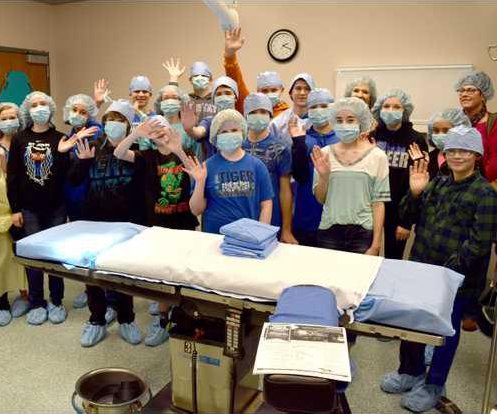Ryan Zink: Athletic trainer; GBHS instructor
Resume: This is his fifth year at Great Bend USD 428. He started as an athletic trainer and also worked part-time for Advanced Therapy Sports Medicine in Great Bend.
Family: Wife Teressa, and many of the “Zinks” in this area.
Pets: Two dogs.
Education: Barton Community College; bachelor’s degree from Wichita State University in exercise science and athletic training; master’s degree from Louisiana Tech University in health and physical education.
Something you may not know: “I’m a World War II re-enactor. My grandfather was in World War II.” Zink’s replica World War II uniform is currently on loan to Eisenhower Elementary School, which is celebrating the 125th anniversary of the birth of President Dwight D. Eisenhower.
What led him to this line of work: “I always had a knack for sports medicine. It felt natural. I initially wanted to teach physical education as well as athletic training.”
Great Bend High School students interested in careers in health care or science can now enroll in Sports Medicine. Three Sports Medicine I classes and one section of Sports Medicine II were added to the GBHS curriculum for the 2015-2016 school year. Athletic trainer Ryan Zink is the instructor for all of the courses.
If GBHS students take both sports medicine classes they can also earn credit at Barton Community College.
These introductory courses are ideal for students considering future careers as physical education instructors, athletic trainers or physical therapists; in fact, they’re good for exploring all kinds of career pathways in health or science, Zink said. “It’s about getting the kids to think along different lines and consider different careers.”
The course introduces students to human anatomy and physiology, as well as injuries the body can sustain and what can be done to treat injuries.
For example, last Monday’s lesson was about soft tissue injuries to the lower legs, including shin splints. Students learned some of the symptoms and causes – the primary cause being improperly fitting shoes.
The first step in diagnosing a problem of this nature is to look at the patient’s feet, so that’s what they did.
“Everybody take your shoes off!” Zink said.
One by one, students stood before the class, allowing classmates to see a variety of feet – arched and flat. Then they looked at the subjects from behind, viewing their Achilles tendons. Finally, they watched each other walk, and remarked on any observations.
“Everybody has little subtleties,” Zink told the students. “If you look for it, everybody has something a little different.”
During the course, Zink brings in medical professionals from the area to talk about their careers and discuss education requirements, among other topics.
Not all of the lessons take place in the classroom. Students take a trip to BCC so they can see another sports medicine facility.
Last year, GBHS attended a regional competition with two teams of three students each, where they gave poster presentations to medical professionals. One team won the competition and got to go to the University of Kansas Medical Center to present at the state competition.





